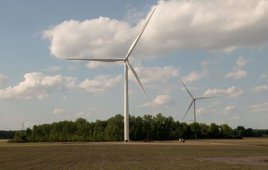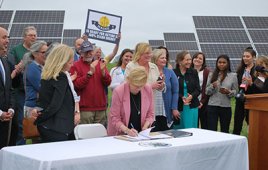Editor’s note: A successful fuel cell industry will depend on the ready and inexpensive supply of hydrogen. For the cleanest environment possible, the hydrogen will be electrolyzed with wind-generated power.

One new INLINECOATER FC system can produce more than 1 million plates annually.
Impact Coatings, a Swedish supplier of technology for PVD coatings of automotive components, has introduced the next-generation INLINECOATER FC system, a coating system for high-volume manufacturing of metal bipolar plates for hydrogen fuel cells. One new INLINECOATER FC system can produce more than 1 million plates annually, the company states.
Fuel cell manufacturers have historically used graphite plates, but increasing need for the scalable, high-volume and low-cost production of lightweight automotive fuel cells are shifting demand toward stainless steel bipolar plates (BPP). To increase fuel cell efficiency and lifespan, Impact Coatings’ equipment, processes and materials protect metal plates with an electrically conductive and corrosion-resistant coating.
Impact Coatings’ INLINECOATER FC system enables the production of stainless steel bipolar plates for PEM fuel cells – the type preferred for most vehicle applications. Improvements built into the next-generation offering include faster vacuum chamber evacuation; faster chamber rotation; faster nano-material coating; and new, more cost-effective source material (targets).
With a significantly reduced coating cycle time of 36 seconds per BPP pair (corresponding to 200 coated plates per hour), INLINECOATER FC system can integrate with high-speed automated production lines. Integration with industrial robotic systems for plate handling can further improve cycle time and machine utilization, the company states.
Filed Under: Uncategorized




